- Home
- Stuart Woods
Hot Pursuit
Hot Pursuit Read online
BOOKS BY STUART WOODS
F I C T I O N
Insatiable Appetites†
Paris Match†
Cut and Thrust†
Carnal Curiosity†
Standup Guy†
Doing Hard Time†
Unintended Consequences†
Collateral Damage†
Severe Clear†
Unnatural Acts†
D.C. Dead†
Son of Stone†
Bel-Air Dead†
Strategic Moves†
Santa Fe Edge§
Lucid Intervals†
Kisser†
Hothouse Orchid*
Loitering with Intent†
Mounting Fears‡
Hot Mahogany†
Santa Fe Dead§
Beverly Hills Dead
Shoot Him If He Runs†
Fresh Disasters†
Short Straw§
Dark Harbor†
Iron Orchid*
Two-Dollar Bill†
The Prince of Beverly Hills
Reckless Abandon†
Capital Crimes‡
Dirty Work†
Blood Orchid*
The Short Forever†
Orchid Blues*
Cold Paradise†
L.A. Dead†
The Run‡
Worst Fears Realized†
Orchid Beach*
Swimming to Catalina†
Dead in the Water†
Dirt†
Choke
Imperfect Strangers
Heat
Dead Eyes
L.A. Times
Santa Fe Rules§
New York Dead†
Palindrome
Grass Roots‡
White Cargo
Deep Lie‡
Under the Lake
Run Before the Wind‡
Chiefs
T R A V E L
A Romantic’s Guide to the Country Inns of Britain and Ireland (1979)
M E M O I R
Blue Water, Green Skipper
*A Holly Barker Novel
†A Stone Barrington Novel
‡A Will Lee Novel
§An Ed Eagle Novel
G. P. PUTNAM’S SONS
Publishers Since 1838
Published by the Penguin Group
Penguin Group (USA) LLC
375 Hudson Street
New York, New York 10014
USA • Canada • UK • Ireland • Australia • New Zealand • India • South Africa • China
penguin.com
A Penguin Random House Company
Copyright © 2015 by Stuart Woods
Penguin supports copyright. Copyright fuels creativity, encourages diverse voices, promotes free speech, and creates a vibrant culture. Thank you for buying an authorized edition of this book and for complying with copyright laws by not reproducing, scanning, or distributing any part of it in any form without permission. You are supporting writers and allowing Penguin to continue to publish books for every reader.
Library of Congress Cataloging-in-Publication Data
Woods, Stuart.
Hot pursuit / Stuart Woods.
p. cm.—(Stone Barrington ; 33)
ISBN 978-0-698-15416-2
1. Barrington, Stone (Fictitious character)—Fiction. 2. Private investigators—Fiction. I. Title.
PS3573.O642H69 2015 2014040673
813'.54—dc23
This is a work of fiction. Names, characters, places, and incidents either are the product of the author’s imagination or are used fictitiously, and any resemblance to actual persons, living or dead, businesses, companies, events, or locales is entirely coincidental.
Version_1
This book is for Bill Bratton and Rikki Klieman.
CONTENTS
Books by Stuart Woods
Title Page
Copyright
Dedication
Chapter 1
Chapter 2
Chapter 3
Chapter 4
Chapter 5
Chapter 6
Chapter 7
Chapter 8
Chapter 9
Chapter 10
Chapter 11
Chapter 12
Chapter 13
Chapter 14
Chapter 15
Chapter 16
Chapter 17
Chapter 18
Chapter 19
Chapter 20
Chapter 21
Chapter 22
Chapter 23
Chapter 24
Chapter 25
Chapter 26
Chapter 27
Chapter 28
Chapter 29
Chapter 30
Chapter 31
Chapter 32
Chapter 33
Chapter 34
Chapter 35
Chapter 36
Chapter 37
Chapter 38
Chapter 39
Chapter 40
Chapter 41
Chapter 42
Chapter 43
Chapter 44
Chapter 45
Chapter 46
Chapter 47
Chapter 48
Chapter 49
Chapter 50
Chapter 51
Chapter 52
Chapter 53
Chapter 54
Chapter 55
Chapter 56
Chapter 57
Chapter 58
Chapter 59
Chapter 60
Chapter 61
Chapter 62
Chapter 63
Author’s Note
1
STONE BARRINGTON STOOD on a wide expanse of tarmac, leaning into thirty knots of icy wind, holding his hat on his head, his trench coat inadequate to the task of keeping his body temperature in the normal range. It was January in Wichita.
He watched as a thing of beauty made a turn and rolled toward him. It bore his tail number, but not on the tail—on the engine nacelles. Its white fuselage bore stripes of blue and red, sweeping back to a night-blue tail, emblazoned with stars. It was his brand-new Citation M2, for which he had waited two years. The form of the delivery pilot, a man named Pat Frank, could be seen in the pilot’s seat, having flown the twenty-minute flight from the factory, in Independence, Kansas.
A lineman ran forward and chocked the nosewheel, and the pilot cut the engines, their dying whine leaving the howl of the wind as the only noise on the ramp.
Stone had spent the past sixteen days in the classroom and the simulator; the content of his life had shrunk to sweating out instruction all day, then ordering room service at night and falling asleep in front of the TV. He wanted the real airplane and he wanted New York. Now.
The door of the airplane swung open and a figure kicked the folding steps down, and Stone got his first surprise of the day. The ferry pilot descended onto the tarmac, and her blond hair streamed with the wind. “Hi,” she said, holding out a hand. “I’m Pat Frank. Can we get out of this wind?”
“Follow me,” Stone said, running for the airplane and climbing the steps. He glanced into the cockpit, which was completely familiar to him, since the three fourteen-inch screens of the Garmin 3000 avionics and the accompanying switches and throttles were identical to those in the simulator. He sank into one of the
four comfortable passenger seats and waved Ms. Pat Frank to a seat facing him. “So you’re the hand-holder my insurance company sent to make my first flight with me,” he said.
“I am that,” she replied. “At the very least. You may recall that you paid me to do the acceptance flights and inspections for you, too.”
“And I thought I was signing checks to some grizzled veteran of the airlines, corporate flying, and, maybe, FedEx.”
“I’m all that, except the grizzled part,” she said, smiling, revealing perfect teeth set off by her red lipstick. The soft, goatskin leather jacket, zipped up against the weather, could not conceal her ample breasts. “All we need is fuel and a flight plan filed.”
“I’ve taken care of both.”
“I hope to God you don’t want to do the walk-around inspection in this wind,” she said. “I’ve already done it this morning in a nice warm hangar, and if you want to get me off this airplane you’re going to have to drag me.”
A lineman stuck his head into the cabin. “Fuel’s on the way,” he said. “You want me to stow your bags, Mr. Barrington?”
Pat Frank handed him a key. “Up front, please, and kindly remove the ten bags of lead shot first.”
“Lead shot?” Stone asked, baffled.
“Weight and balance,” she said. “My hundred and twenty pounds weren’t enough to get us into the envelope. With you aboard, no problem, unless you have plans to have some slip of a girl fly the airplane alone.”
“Can’t think of one,” Stone replied.
“Well, if you’ve already been to the can, let’s button this thing up, then climb into the cockpit and see if we can make it fly.”
“After you,” Stone said, stripping off his trench coat.
She pulled up the steps, closed the door, and swung the lever that locked it. In a moment, she was in the copilot’s seat.
Stone went forward and, with some difficulty, managed to get his six-foot-two frame into the pilot’s seat.
Pat helped him with adjusting the seat. “It’s snug, but you’ll get used to it,” she said. “For some reason, Cessna puts all the room in the rear, where the passengers sit—not where the owner-pilots for whom this airplane was intended fly the thing.”
She read out the pre-start checklist, he flipped the appropriate switches, then he turned on the power and the three glass panels slowly came to life, along with the two smaller screens just ahead of the throttles, called the GTUs. These were the iPad-like units with which most of the airplane’s systems were operated. Stone had spent a week playing with a computer-simulated version, memorizing the patterns and trying to forget the old G-1000 in his former airplane.
“Did you have a Mustang before?”
“Yep, I gave it to my son.”
“I hope he’s older than eight,” she said. “That’s quite a toy.”
“He’s twelve, or so, and he’s already type-rated.”
She shook her head. “I never heard of a father giving his son a jet airplane.” She watched as he managed to tap a flight plan into the GTU, then run the system checks. “Not bad for a first flight,” she said.
“They drilled me well in class. Don’t worry, I’ll need your help before long.”
Outside, the fuel truck drove away, and the lineman signaled that the chocks had been pulled. Stone pulled the hand brake and started the engines. When all systems were running smoothly, he listened to ATIS, the tower’s recorded weather report, then called clearance delivery, adjusting the microphone attached to his Bose headset. “Wichita clearance delivery, November One Two Three Tango Foxtrot is IFR to Tango Echo Bravo. Do you have a clearance for me?”
They did, and Stone copied it down and read it back. It included a departure procedure, and he inserted that into his electronic flight plan, then called for permission to taxi. “Thank God that wind is right down the runway,” he said. “I don’t feel like fighting it.” He taxied to the end of the runway, and Pat read out the pre-takeoff checklist. With every switch in its proper position, he asked permission to take off and was cleared. He rolled onto the runway, lined up with the centerline, centered the heading bug, flipped on the pitot heat switches, and pushed the throttles to the firewall.
“Airspeed’s alive,” Pat said after a few seconds, then, “Seventy knots . . . aaaand rotate!”
Stone put both hands on the yoke and pulled back until two V-bars on the display in front of him mated, showing that he had achieved the proper climb angle.
“Positive rate of climb,” Pat said.
Stone raised the landing gear flaps.
“Four hundred fifty feet,” she said.
He pressed the button that turned on the autopilot, then removed his hands from the yoke. They were given an initial climb to ten thousand feet, and he was told to switch to Wichita departure. The frequency was already entered into the G-3000; all he had to do was tap the glass panel at the proper spot. “Wichita departure, N123TF with you out of three thousand for one zero thousand.”
“N123TF, cleared on course. Climb and maintain flight level 410.”
Stone repeated the instruction and pressed the NAV button to tell the autopilot to follow the flight plan, then he dialed forty-one thousand feet into the computer, pressed the Flight Level Control button, and sat back.
He put behind him the claustrophobic previous two weeks and room-service food, and reveled in his new airplane as it climbed quickly to FL 410.
“Does your wife fly?” Pat asked.
“I’m a widower,” Stone replied. “For some years.”
“My condolences.”
“Thank you. Why don’t you delay your return to Wichita, and let’s have dinner tonight?”
“I’m moving into a new apartment tomorrow in New York,” she said, “and I’d love to.”
2
THE FLIGHT was predictably smooth for the first hour. They grilled each other, this being more of a first date than a qualifying flight for the insurance company. Pat was from a small town in Georgia, Delano, which somehow had a familiar ring for Stone. She had started flying after college, had flown air taxi and package delivery, then corporate jets, then for an airline. By the time that went bust, she had made captain, and she took herself to another airline. Finally, she had made the break.
“I’m starting a business,” she said. “I’m calling it The Pat Frank Flight Department, something that the charterers and the corporates have as a matter of course, but not the owner-flown jets. I’ll do all the paperwork, keep the maintenance schedule, update the logbooks weekly, et cetera, et cetera.”
“I could use a service like that,” Stone said. “My secretary has been doing all the work, but since she knows nothing about airplanes, it’s hard for her. You’re hired.”
“Great! My first client! Of course, I can’t have dinner with you tonight, for professional reasons.”
“You’re fired,” Stone said.
“Well, I guess I can make an exception, your being my first client and all.”
“You’re rehired.” Stone looked at the multi-function display before him. “There’s the weather the forecast predicted,” he said, pointing at a green mass ahead of them that was dotted with yellow areas. “We’ll fly over the bulk of it, but when we start our descent on the arrival procedure, we’ll have to contend with it and maybe with some ice, too. And we’ll need an instrument approach.”
“Your airplane is equipped to deal with it,” she reminded him.
Stone tapped an icon or two and brought up the weather at Teterboro. “Six-hundred-foot ceiling, six miles of visibility, wind 040 at twelve, gusting twenty,” he read. “No problem. We’ll keep an eye on it, though.”
“There was some light snow in the forecast, too,” Pat said.
They entered into the arrival procedure, a loop to the north, then back to the south, that the air traffic controllers used t
o line up and keep distance between the conga line of airplanes that would be landing at TEB. ATC gave them a lower altitude, and Stone turned on the ice prevention systems that heated the leading edges of the wings and tail and the windshield. Five minutes later they were in Instrument Meteorological Conditions and blind, except for their instruments. They continued their descent on the arrival, and at the end of it they were vectored to the Instrument Landing System for runway 6 at Teterboro. ATIS told them that the weather had deteriorated to three hundred feet and two miles of visibility, with blowing snow.
Once established on the ILS, Stone watched the indicator for the glide slope and put down the landing gear. The three green lights that indicated that the tricycle gears were down did not come on. “Uh-oh,” he said, then recycled the gear switch. “I guess we’re going to have to blow the gear down.” There was a tank of nitrogen aboard that could be used to force the gear down in the event of a hydraulic failure.
Pat reached forward and twisted the knob that selected night or day flying to “day,” and the three green gear lights appeared. “Some ass turned it to ‘night,’” she said. “And the daylight washed out the dimmed lights.”
“That’s a relief,” Stone said.
She read out the landing checklist, and the autopilot flew them down the glide slope; all Stone had to do was control the airspeed. At three hundred feet they broke out of the clouds, into light snow, and the runway lay directly ahead of them. At 160 feet, Stone turned off the autopilot and landed the airplane smoothly by hand.
“And your first landing is a greaser!” Pat said. “You’ve just passed your insurance check ride!”
Stone called ground control, requested taxi to Jet Aviation, where he kept the airplane, and was given the route. Five minutes later Pat was reading the shutdown checklist, and he was shutting down the engines and switching everything off. He noted the flight time on the Hobbs meter and entered it into his logbook. “We’re home,” he said.
Pat left the cockpit, opened the airplane’s door, and kicked down the steps, which lowered themselves gently into place. Stone went to the rear luggage compartment, switched off the battery to conserve power, and handed a lineman the engine and pitot covers for installation. He locked up and went to the forward luggage compartment, removed his and Pat’s bags, and handed them to another lineman, who put them onto a cart.

 Beverly Hills Dead
Beverly Hills Dead Shakeup
Shakeup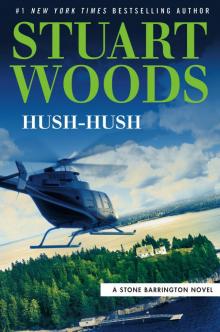 Hush-Hush
Hush-Hush Wild Card
Wild Card A Delicate Touch
A Delicate Touch Dead Eyes
Dead Eyes Stealth
Stealth Loitering With Intent
Loitering With Intent Grass Roots
Grass Roots Scandalous Behavior
Scandalous Behavior L.A. Times
L.A. Times L.A. Dead
L.A. Dead Class Act
Class Act Dirty Work sb-9
Dirty Work sb-9 Bombshell
Bombshell Standup Guy
Standup Guy Quick & Dirty
Quick & Dirty Stuart Woods Holly Barker Collection
Stuart Woods Holly Barker Collection Standup Guy (Stone Barrington)
Standup Guy (Stone Barrington) Capital Crimes
Capital Crimes Kisser
Kisser Hot Pursuit
Hot Pursuit Choke
Choke Blue Water, Green Skipper: A Memoir of Sailing Alone Across the Atlantic
Blue Water, Green Skipper: A Memoir of Sailing Alone Across the Atlantic Under the Lake
Under the Lake Unnatural acts sb-23
Unnatural acts sb-23 Doing Hard Time
Doing Hard Time White Cargo
White Cargo The Prince of Beverly Hills
The Prince of Beverly Hills Severe Clear
Severe Clear Bel_Air Dead
Bel_Air Dead Severe Clear sb-24
Severe Clear sb-24 Unnatural Acts
Unnatural Acts Dirt
Dirt Foreign Affairs
Foreign Affairs Unbound
Unbound Family Jewels
Family Jewels Foreign Affairs (A Stone Barrington Novel)
Foreign Affairs (A Stone Barrington Novel) The Ed Eagle Novels
The Ed Eagle Novels Dirty Work
Dirty Work Fast and Loose
Fast and Loose Worst Fears Realized
Worst Fears Realized D.C. Dead
D.C. Dead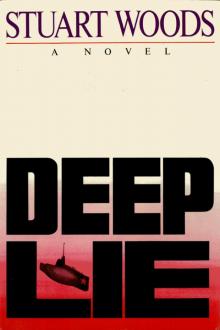 Deep Lie
Deep Lie Santa Fe Edge
Santa Fe Edge Bel-Air dead sb-20
Bel-Air dead sb-20 The Short Forever
The Short Forever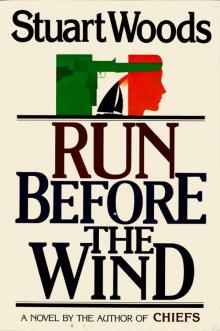 Run Before the Wind
Run Before the Wind Dark Harbor
Dark Harbor Shoot First (A Stone Barrington Novel)
Shoot First (A Stone Barrington Novel) Sex, Lies & Serious Money
Sex, Lies & Serious Money Santa Fe Dead 03
Santa Fe Dead 03 D.C. Dead sb-22
D.C. Dead sb-22 Swimming to Catalina
Swimming to Catalina Collateral Damage
Collateral Damage Hot Mahogany
Hot Mahogany Barely Legal
Barely Legal Imperfect Strangers
Imperfect Strangers Paris Match
Paris Match Mounting Fears
Mounting Fears Mounting Fears wl-7
Mounting Fears wl-7 Shoot Him If He Runs
Shoot Him If He Runs Short Straw
Short Straw Santa Fe Dead
Santa Fe Dead Dead in the Water
Dead in the Water Hothouse Orchid
Hothouse Orchid Below the Belt
Below the Belt Orchid Beach hb-1
Orchid Beach hb-1 Son of Stone sb-21
Son of Stone sb-21 Cold Paradise 07
Cold Paradise 07 Blood Orchid
Blood Orchid Fresh Disasters
Fresh Disasters Lucid Intervals
Lucid Intervals Dishonorable Intentions
Dishonorable Intentions Cut and Thrust
Cut and Thrust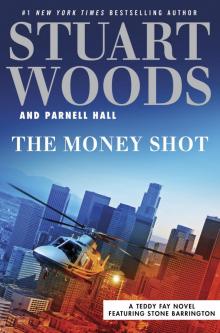 The Money Shot
The Money Shot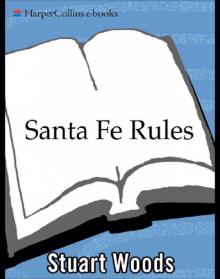 Santa Fe Rules
Santa Fe Rules Iron Orchid
Iron Orchid New York Dead
New York Dead The Short Forever sb-8
The Short Forever sb-8 Son of Stone
Son of Stone Insatiable Appetites
Insatiable Appetites Chiefs
Chiefs Unintended Consequences
Unintended Consequences Reckless Abandon
Reckless Abandon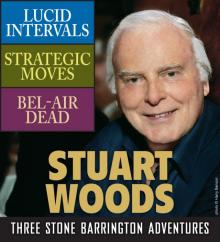 Three Stone Barrington Adventures
Three Stone Barrington Adventures Stuart Woods 6 Stone Barrington Novels
Stuart Woods 6 Stone Barrington Novels Shoot First
Shoot First Indecent Exposure
Indecent Exposure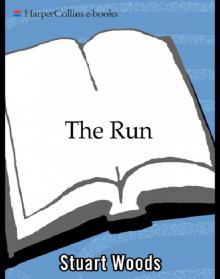 The Run
The Run Bel-Air Dead
Bel-Air Dead Strategic Moves
Strategic Moves Cold Paradise
Cold Paradise